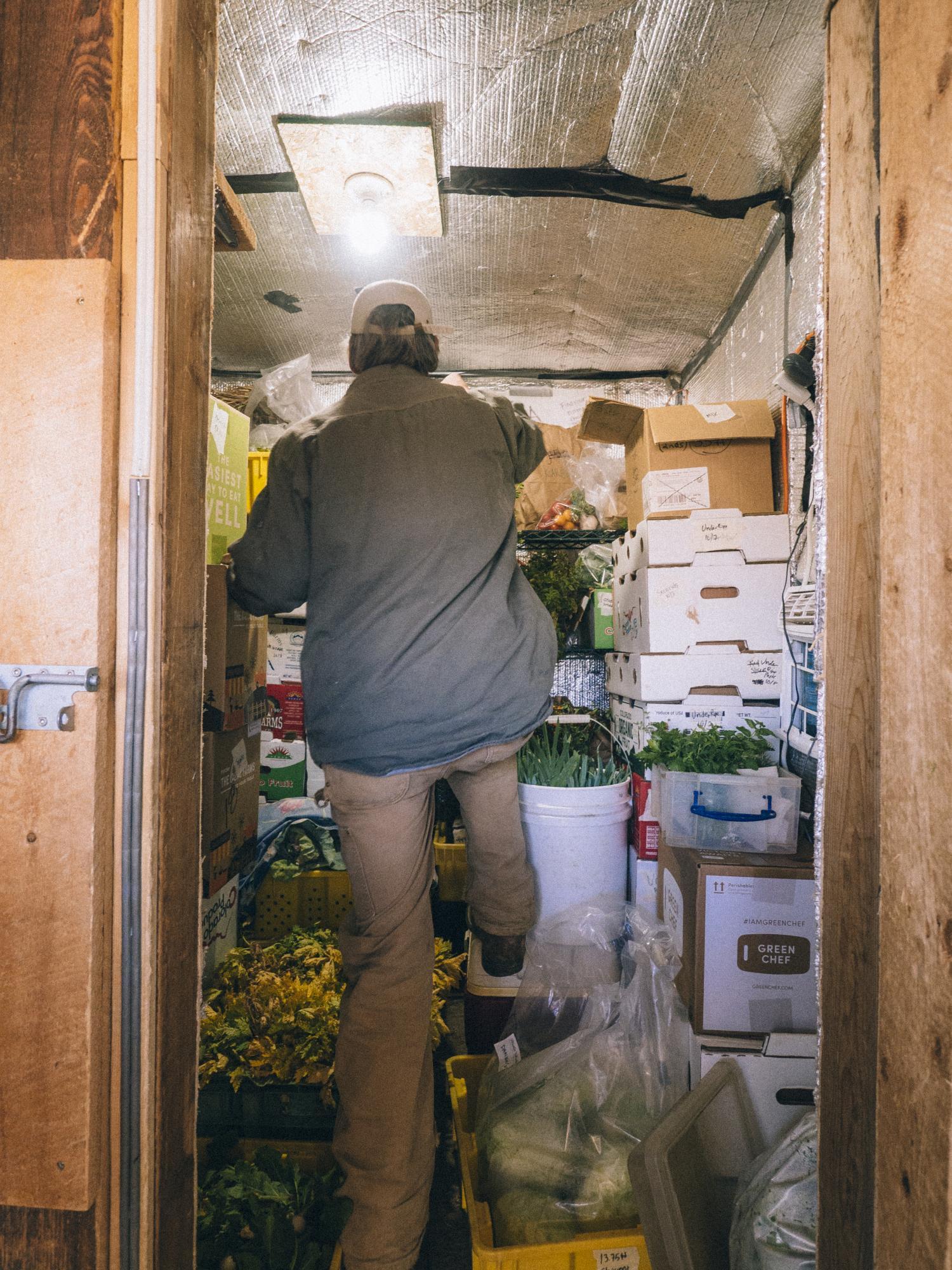Do You Know How to Market Food? How About in a Pandemic?

One of the great challenges of being a marketing executive is that everyone else thinks they understand how to do your job.
This is not the case with, say, an accountant or a lawyer. Their disciplines seem like specialties that exist in their own realms, beyond the layman’s comprehension. But since we are all daily consumers of marketing – some studies estimate that the average American is exposed to more than 5,000 ads per day, infiltrating our lives at every hour and every turn – naturally, we think we are all good marketers.
But on a July day in 2018 at CU Boulder’s Food Industry Executive Leadership Development (FIELD) program, that illusion quickly evaporated for three dozen food executives – many of whom actually were marketing executives. There, at the end of an afternoon-long class about the “art and science of food marketing,” filled with useful but familiar lessons in branding, storytelling narratives, and segmentation/targeting/positioning strategies, the topic turned to e-commerce – and specifically, how to navigate the complex world of selling your food products on Amazon.
Kevin Weiss of the marketing agency Amplio Digital explained to the executives that in today’s world of the “omni-channel journey,” you aren’t just competing with the other brands in your vertical but with the “I-want-it-now mentality.” The marketing funnel, said Weiss, doesn’t end with the purchase, but must go on to include retention and advocacy strategies. And although online grocery shopping (pre-pandemic, of course) only represents 5% of all food sales, Amazon must still be reckoned with because 55% of online product searches start with them, and 43% of all online dollars go through them. To a room full of increasingly furrowed brows, Weiss talked about using e-commerce not just to sell but to conduct market analytics through tools like the AMZScout Chrome extension and “sentiment studies.”
He reminded the executives:
If you don’t win or own the buy box, you don’t get the sale. You don’t get to measure that. What I would argue is that you want there to be a massive amount of demand for your products. It shouldn’t be hugely important whether a consumer buys the product from your Seller Central account, or your Vendor Central account, or another account, provided that the customer experience is somewhat consistent. So we don’t strive for 100% buy box ownership—that would be ideal, but 80-90-95%, that’s really good; you want to control as much as you can because you get the data of how much you are actually selling, you get to control more of the customer experience, and you can also run sponsored product ads on it.
At that moment, anyone who thought they knew how to be a good modern-day marketer threw in the white towel.
Once upon a time, marketing used to be a pretty straightforward discipline, especially in the food industry. There weren’t many sales channels, there was no “journey,” and the only thing approximating a “buy box” was the supermarket cash register. A small group of consumer packaged goods giants – General Foods, Kraft, Nabisco, Pillsbury, Hershey, General Mills, Campbell Soup – dominated pantries. They decided what Americans wanted, and they got up on their marketing soap boxes to explain it. The companies often stocked the grocery shelves themselves, or paid fees to get the best slots; they promoted their deals and prices through cheap one-size-fits-all “circulars” (free-standing inserts, or FSIs) in the newspapers; and from the 1950s through the 1980s, they built brand recognition and loyalty through the ubiquitous 30-second TV commercial, often backed by cloying but unforgettable jingles. Who over the age of 50 today cannot still hum the commercial tunes
for the Oscar Mayer Wiener, the Hershey’s great American chocolate bar, or Rice-a-Roni?
That was just the way things were – and to those at the General Foods headquarters in White Plains, New York, or to their muses a few miles south on Madison Avenue, it may have seemed like nothing would ever change.
But marketing always has an elusive quality to it, slipping out of control through new technologies or changing tastes without the marketers realizing it.
Hence, with shifts in attitude toward health and growing awareness about food ingredients, the once-laughable natural foods movement sprang to life in the 1970s and 80s through retail chains like Mrs. Gooch’s and Alfalfa’s, and through brands like Celestial Seasonings and Cascadian Farms. Then came the VCR, the first of a series of technologies that gave TV watchers the ability to skip ads altogether. When the internet came along a few years later, it afforded small brands the ability to mount impressive-looking marketing efforts through slick websites and a new form of advertising (remember the novelty of seeing the first online ads on Prodigy?).
How did the big brands react? They saw this as the creation of more soapboxes, not as a paradigm shift. So they mostly just tried to outspend their upstart rivals and amp up the volume to out-shout the other voices. In their minds, it was still a one-way monologue from brand to consumer.
But then e-mail became popular, and social media, and - importantly for the food industry - social sharing through Pinterest, Instagram, YouTube, and “influencers.” With these tools the consumers were able to communicate with the brands (C-to-B) and with each other (C-to-C), and make their voices heard. The new world of changing tastes, different preferences, and food-with-a-back-story exploded into mainstream news and public consciousness. The food brands that recognized that their marketing had to be authentic, purpose-driven, a dialogue instead of a monologue (e.g., Whole Foods) thrived. Those who persisted in their old ways, like Campbell and Kraft-Heinz, entered into precipitous declines.
Today, amidst the pandemic, natural food marketers are faced with more upheaval, and the urgent need to adapt in real time. For example, in-store demos and sampling – a marketing staple for small brands and new products – have vaporized; few people want to be in a supermarket, let alone linger there, so marketers have had to rip that page out of their playbooks. Moreover, with surging unemployment and supply chains in turmoil, most consumers are falling back to big brands and comfort foods, so it is harder than ever for a new product or upstart brand to even be found, let alone break through. And those price promotions in FSIs (Sprouts Farmers Market, for one, was still sending out an estimated 20 million circulars a week in February) – there’s simply no need anymore. With supplies limited and restaurants shuttered, customers will pay anything just to get food in their pantries.
As for that Minotaur’s labyrinth of Amazon Seller Central, Vendor Central, and buy boxes that the food executives were learning about at CU in 2018 - well, it’s upon us. According to The Atlantic (April 17), there has been a sevenfold increase in downloads of the app Instacart, the largest independent grocery delivery service in the nation, and the company has seen its order volume increase by 150%. The New York Times reported on April 5 that orders for Amazon groceries have been as much as 50 times higher than normal. Things will eventually moderate, but there is no going back. Marketers who until this point have resisted playing Amazon’s confusing game, or who have only scratched the surface of e-commerce and digital advertising, need to adapt fast.
Still, it wouldn’t be surprising to see some clever marketers break out some old-school tricks. Can the first 30-second pandemic TV jingle be that far off?
Joe Dobrow is a lecturer at the CU Boulder Leeds School of Business, and is author of the books Natural Prophets – From Health Foods to Whole Foods, How the Pioneers of the Industry Changed the Way We Eat and Reshaped American Business (Rodale Books, 2014), and Pioneers of Promotion – How Press Agents for Buffalo Bill, P.T. Barnum and the World’s Columbian Exposition Created Modern Marketing (University of Oklahoma Press, 2018). He may be reached at jdobrow@MBArk.com.
Photo courtesy of Jane Cavagnero.







